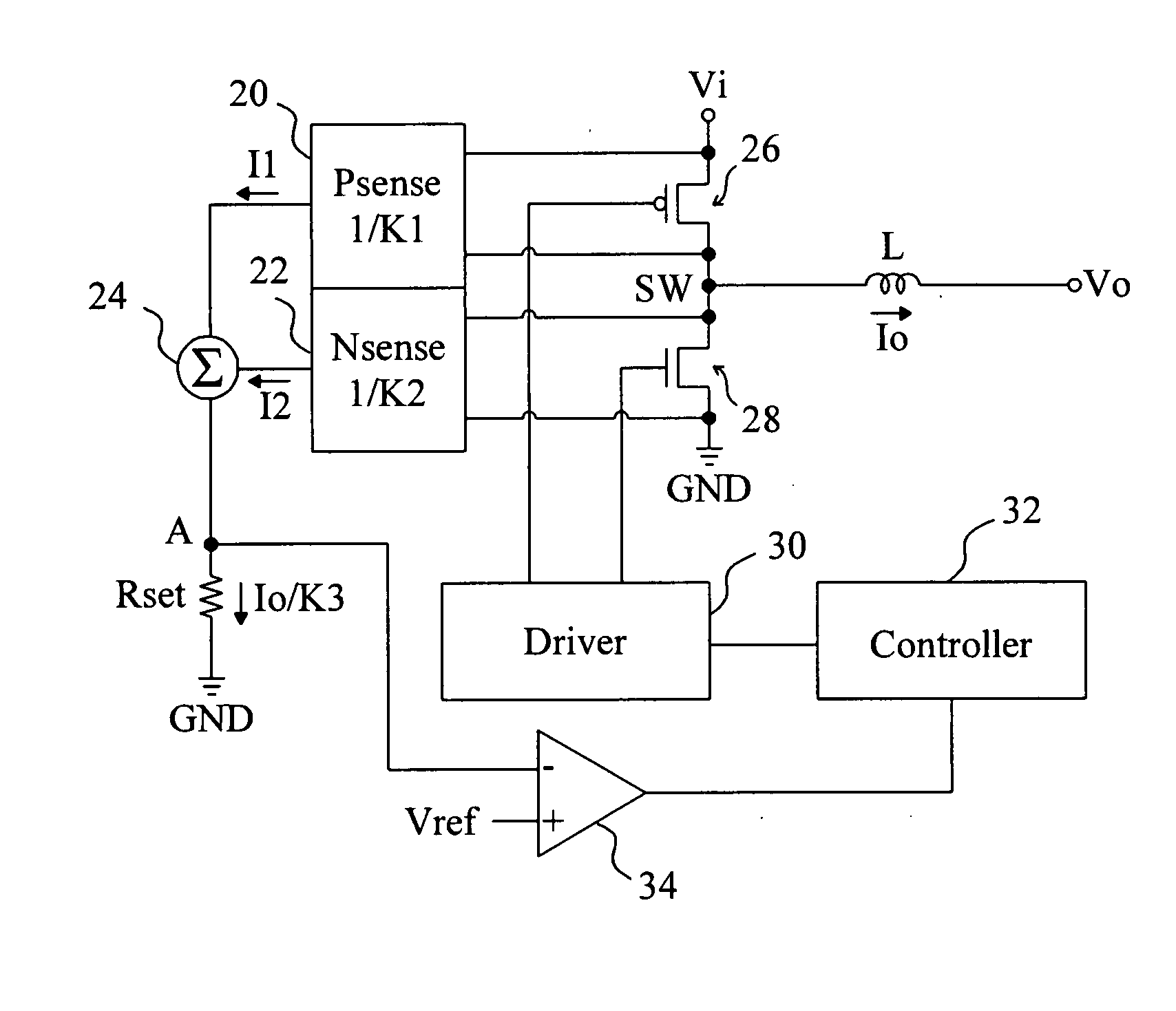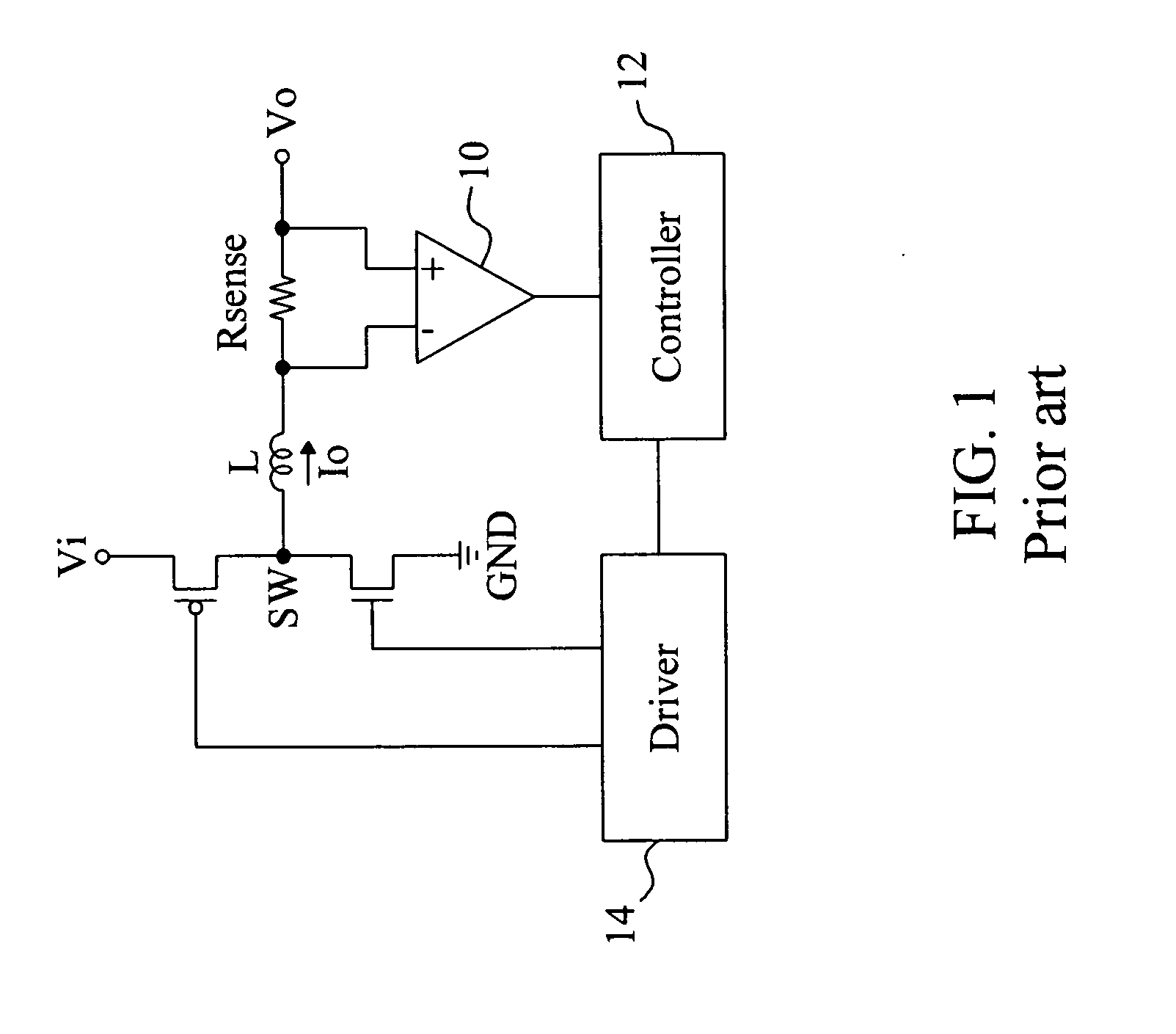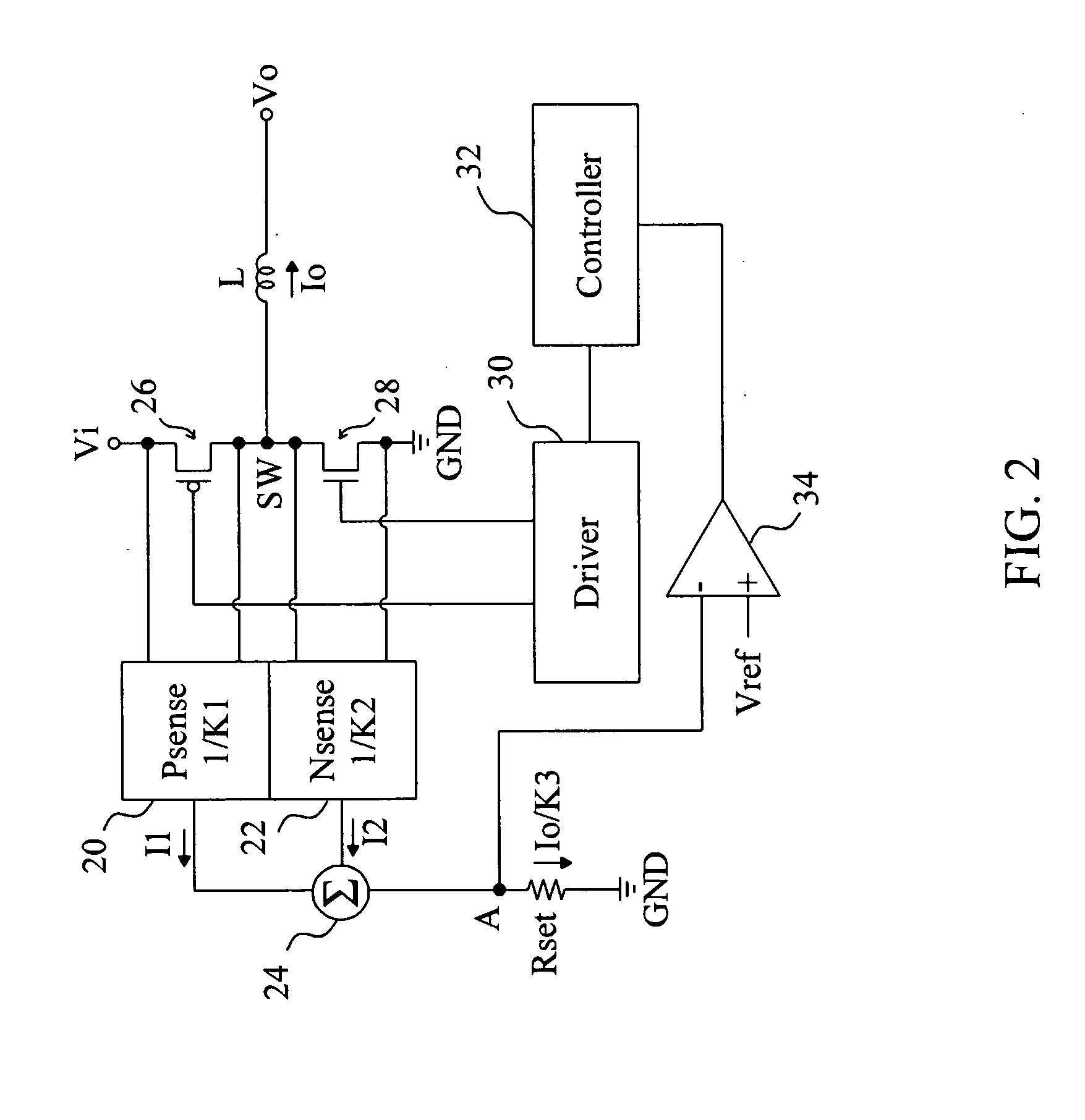Output current detection of a voltage regulator
a voltage regulator and output current technology, applied in the field of voltage regulators, can solve the problems of small voltage variation, easy interference, small voltage variation, etc., and achieve the effect of facilitating the feedback control of the voltage regulator, preventing efficiency loss, and precise detection of variation
- Summary
- Abstract
- Description
- Claims
- Application Information
AI Technical Summary
Benefits of technology
Problems solved by technology
Method used
Image
Examples
first embodiment
[0017]FIG. 2 provides a first embodiment according to the present invention for buck voltage regulators, in which a high-side transistor 26 is coupled between a power input Vi and a switching node SW, a low-side transistor 28 is coupled between the switching node SW and a ground terminal GND, an inductor L is coupled between the switching node SW and a power output Vo, a driver 30 switches the high-side transistor 26 and the low-side transistor 28 to control the output current Io flowing through the inductor L to generate an output voltage Vo, a high-side sensing circuit 20 senses the current in the high-side transistor 26 to generate a current I1 with K1 ratio, a low-side sensing circuit 22 senses the current in the low-side transistor 28 to generate a current I2 with K2 ratio, and the currents I1 and I2 are summarized by a summing circuit 24 to flow through a setting resistor Rset. The role of the setting resistor Rset is similar to the conventional current sensing resistor Rsense...
second embodiment
[0020]FIG. 4 provides a second embodiment according to the present invention, which uses an apparatus for output current detection of a non-synchronous buck voltage converter having a diode D as the low-side element. In this embodiment, instead of detecting the current in the diode D, the sensing circuit 42 only senses the current in the high-side transistor 40, and a current Is having the waveform shown at the lower part of FIG. 3 is produced by a simulation circuit 44 to provide to the setting resistor Rset to generate a voltage thereon for feedback control (not shown in FIG. 4). In another embodiment, the aforesaid current simulation is replaced by directly detecting the current in the diode D to be combined with the current in the high-side transistor 40 to supply to the setting resistor Rset.
third embodiment
[0021]FIG. 5 is a diagram of a third embodiment according to the present invention for boost voltage regulators, in which a sensing circuit 56 senses the current in a high-side transistor 54 to generate a current I1, a sensing circuit 58 senses the current in a low-side transistor 52 to generate a current I2, and the currents I1 and I2 are summarized by a summing circuit 60 to generate a sensing current Is to flow through a setting resistor Rset to produce a voltage at a node B to be monitored by a comparator 66 to provide a feedback signal to a controller 64 for feedback control. A driver 62 generates driving signals to switch the high-side and low-side transistors 54, 52 under the control of the controller 64. In this embodiment, the proportion between the currents I1 and I2 is also adjustable, for example, by using different parameters K4 and K5.
[0022]FIG. 6 is a diagram of a modified embodiment from that of FIG. 5. In this embodiment, the inverse of K5 is set to be zero. Namely,...
PUM
 Login to View More
Login to View More Abstract
Description
Claims
Application Information
 Login to View More
Login to View More - R&D
- Intellectual Property
- Life Sciences
- Materials
- Tech Scout
- Unparalleled Data Quality
- Higher Quality Content
- 60% Fewer Hallucinations
Browse by: Latest US Patents, China's latest patents, Technical Efficacy Thesaurus, Application Domain, Technology Topic, Popular Technical Reports.
© 2025 PatSnap. All rights reserved.Legal|Privacy policy|Modern Slavery Act Transparency Statement|Sitemap|About US| Contact US: help@patsnap.com



